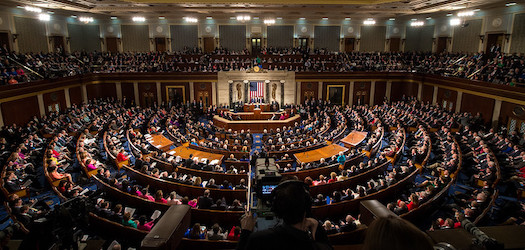
U.S. Senate. The upper chamber of the United States Congress. The U.S. Senate and the lower chamber of Congress, the U.S. House of Representatives, comprise the federal bicameral legislature of the United States. Together, the Senate and the House maintain authority under Article One of the U.S. Constitution to pass or defeat federal legislation.
The Senate has exclusive power to confirm U.S. presidential appointments, approve or reject treaties, and try cases of impeachment brought by the House. The Senate and the House provide a check and balance on the powers of the executive and judicial branches of government.
The composition and powers of the Senate are established by Article One of the Constitution. Each of the 50 states is represented by two senators who serve staggered terms of six years; in total, the Senate consists of 100 members.
As the upper chamber of Congress, the Senate has several powers of advice and consent. The Senate conducts trials of officials who have been impeached by the House. In the early 1920s, the practice of majority and minority parties electing their floor leaders began. The Senate’s legislative and executive business is managed and scheduled by the Senate majority leader.